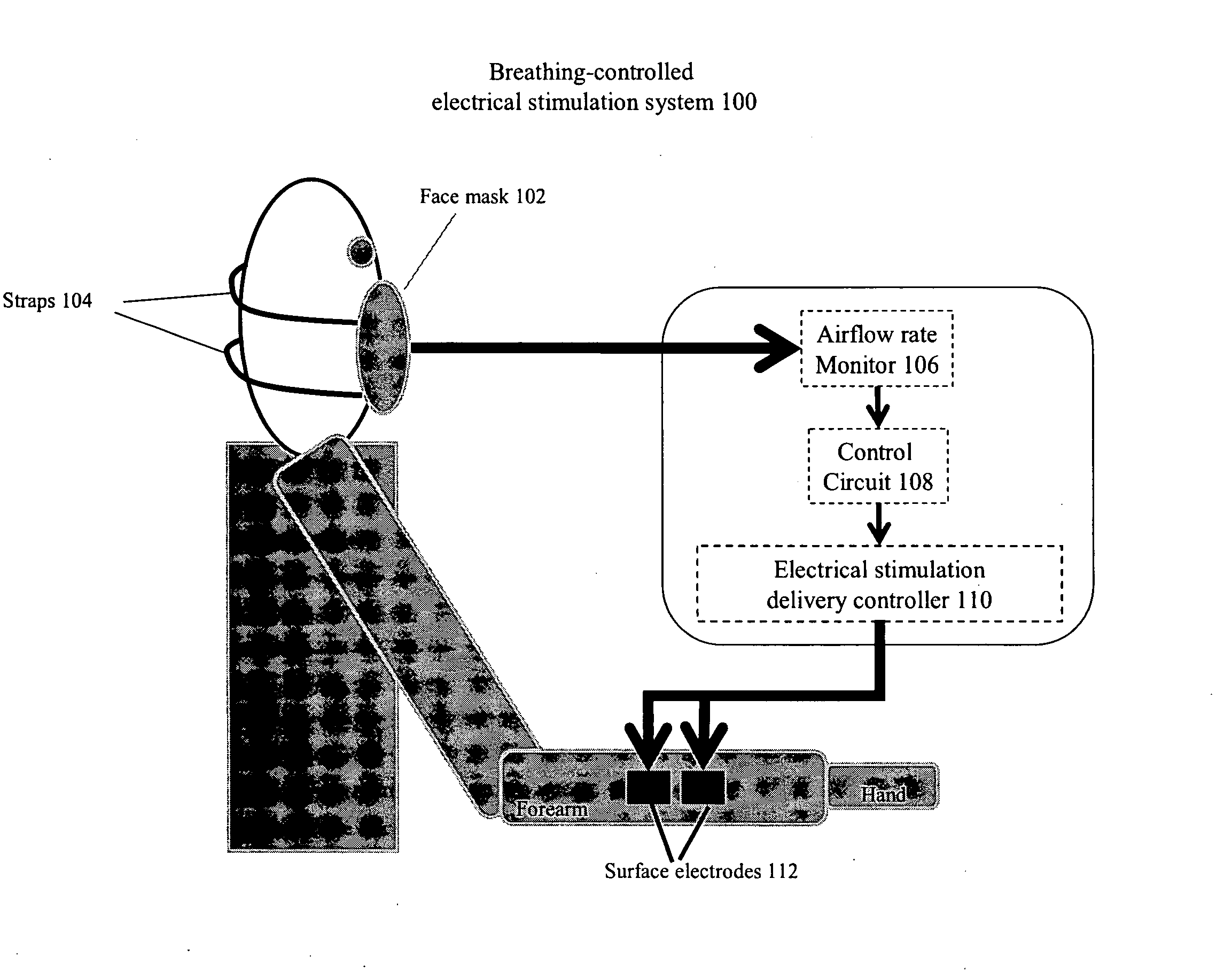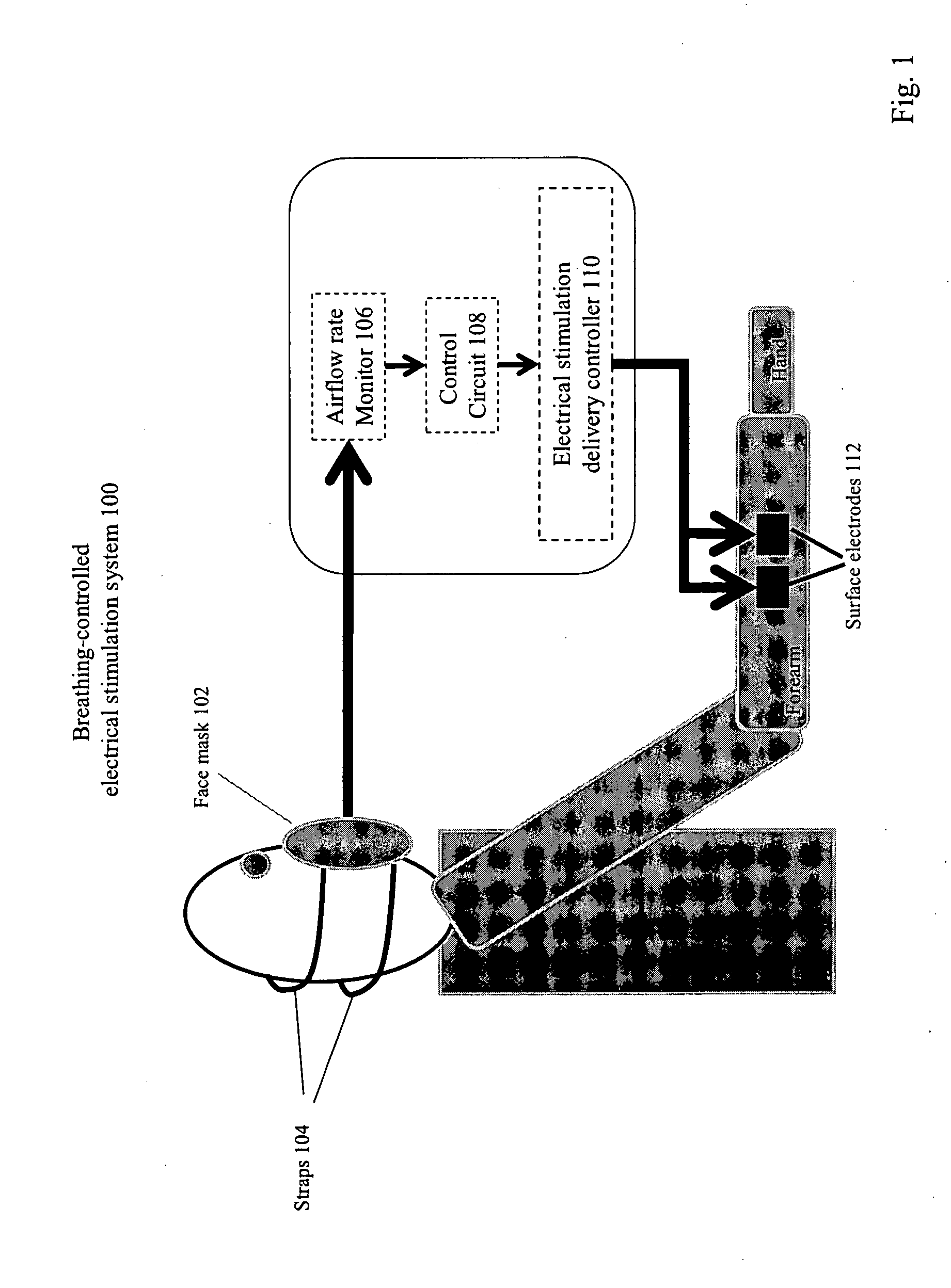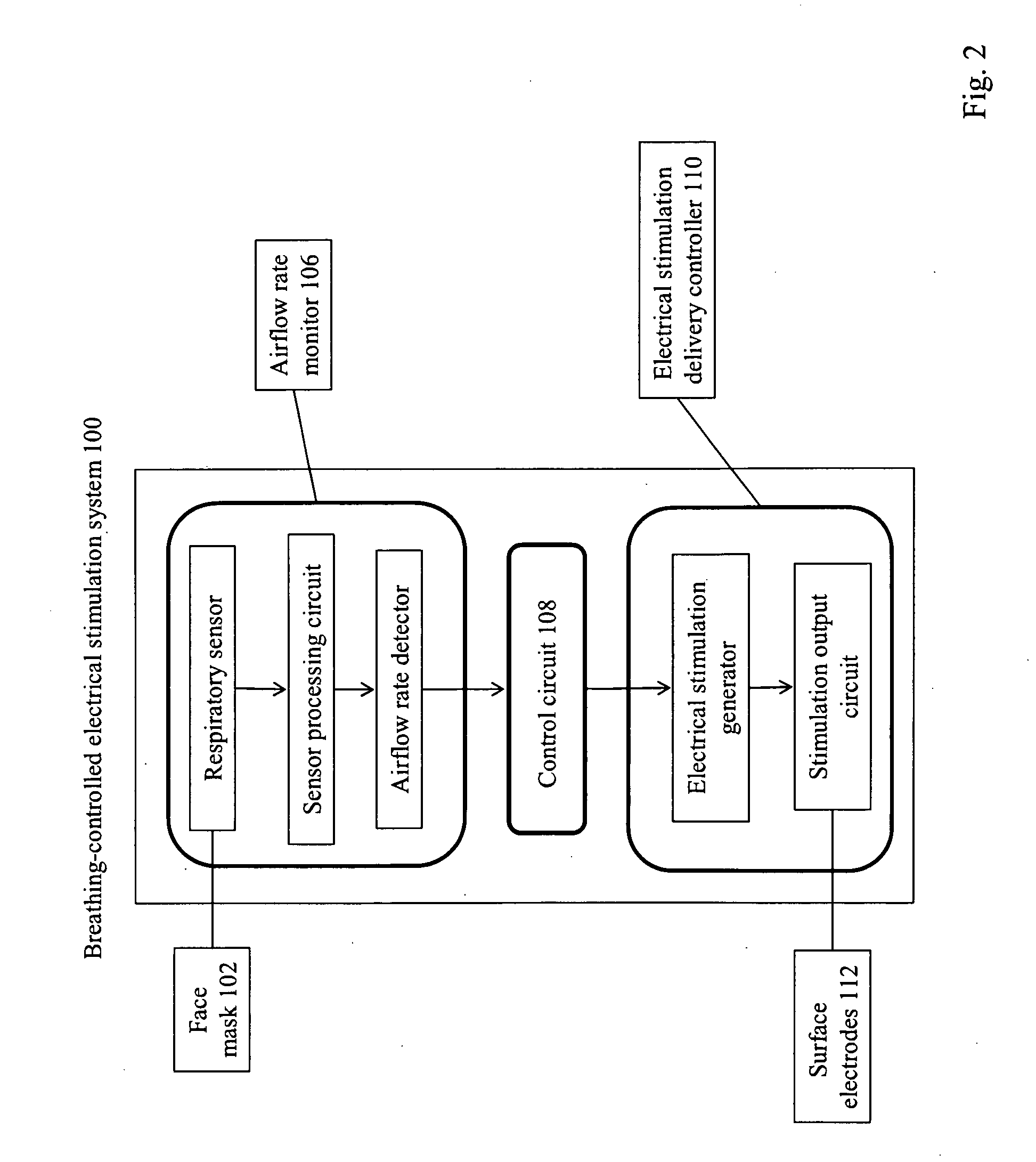Method and Apparatus of Breathing-Controlled Electrical Stimulation for Skeletal Muscles
a technology of electrical stimulation and skeletal muscles, applied in the field of electric stimulation of skeletal muscles, can solve the problems of limiting the application imposing other problems, including convenience, compliance and cost, and controversial effect of current electrical stimulation techniques on spasticity reduction
- Summary
- Abstract
- Description
- Claims
- Application Information
AI Technical Summary
Benefits of technology
Problems solved by technology
Method used
Image
Examples
example 1
[0044]Data from one study is shown in FIG. 5, which supports that the most effective response to electrical stimulation can be achieved during forced inspiration. In particular, FIG. 5 shows an example response from a stroke patient when a single electrical pulse is delivered to the finger extensors during three different breathing conditions. The stroke patient (male, 75 years of age, right CVA / left hemiplegia for 22 years) had intact sensation and weak voluntary finger extension. During the electrical stimulation treatment, the patient was seated in a comfortable position in a chair with the impaired forearm stabilized in the neutral position. The patient's wrist was also stabilized in the neutral position using Velcro stripes. The mid-shafts of proximal phalanges were stabilized against four force sensors such that the metacarpophalangeal (MCP) joints were in approximately 30 degrees of flexion. The maximal finger extension force measured at MCP joints was 11.1 Newtons. The patie...
example 2
[0047]Data from another study is shown in FIG. 6, which supports the positive rehabilitation effect of breathing-controlled electrical stimulation intervention. In particular, FIG. 6 shows example responses from another stroke patient before and after a 25 minute breathing-controlled electrical stimulation intervention. The patient (male, 60 years of age, left CVA / right hemiplegia for 2 years and 2 months) had intact sensation but was without voluntary finger / wrist extension. The same experimental set-up was used for this patient as described above in the context of FIG. 5. The procedure differed from that described above. The patient was directed to initiate repeated forced inspiration, as opposed to the three breathing conditions above, and electrical stimulation was delivered only under the Inspiration condition. Single electrical pulses were triggered and delivered to his right finger extensors each time the inspiration airflow rate reached 2.0 L / s, 40% of the patient's maximal ...
example 3
[0050]A pilot study with a chronic traumatized brain injury (TBI) patient demonstrated significant spasticity reduction. The patient (male, 27 years of age, left hemiplegia resulted from TBI for 13 years) had intact sensation of the left forearm and hand and no voluntary wrist / finger extension. The Modified Ashworth Scale of left finger flexors was 3 (0: normal, 4: fixed posture due to hypertonia). The patient received approximately 25 min of breathing-controlled electrical stimulation using the same protocol as described in Example 2. The intensity of electrical stimulation was 140 V. The duration of pulse was 0.1 ms. The preset inspiration airflow rate was 2.0 L / s, equivalent to 50% of the measured maximal inspiration airflow rate (4.0 L / s). The patient reported loosening of his left finger flexors immediately after the treatment, and the Modified Ashworth Scale was 2. This significant reduction in finger flexor hypertonia was retained until the end of 4-week follow-up from his tr...
PUM
 Login to View More
Login to View More Abstract
Description
Claims
Application Information
 Login to View More
Login to View More - R&D
- Intellectual Property
- Life Sciences
- Materials
- Tech Scout
- Unparalleled Data Quality
- Higher Quality Content
- 60% Fewer Hallucinations
Browse by: Latest US Patents, China's latest patents, Technical Efficacy Thesaurus, Application Domain, Technology Topic, Popular Technical Reports.
© 2025 PatSnap. All rights reserved.Legal|Privacy policy|Modern Slavery Act Transparency Statement|Sitemap|About US| Contact US: help@patsnap.com



